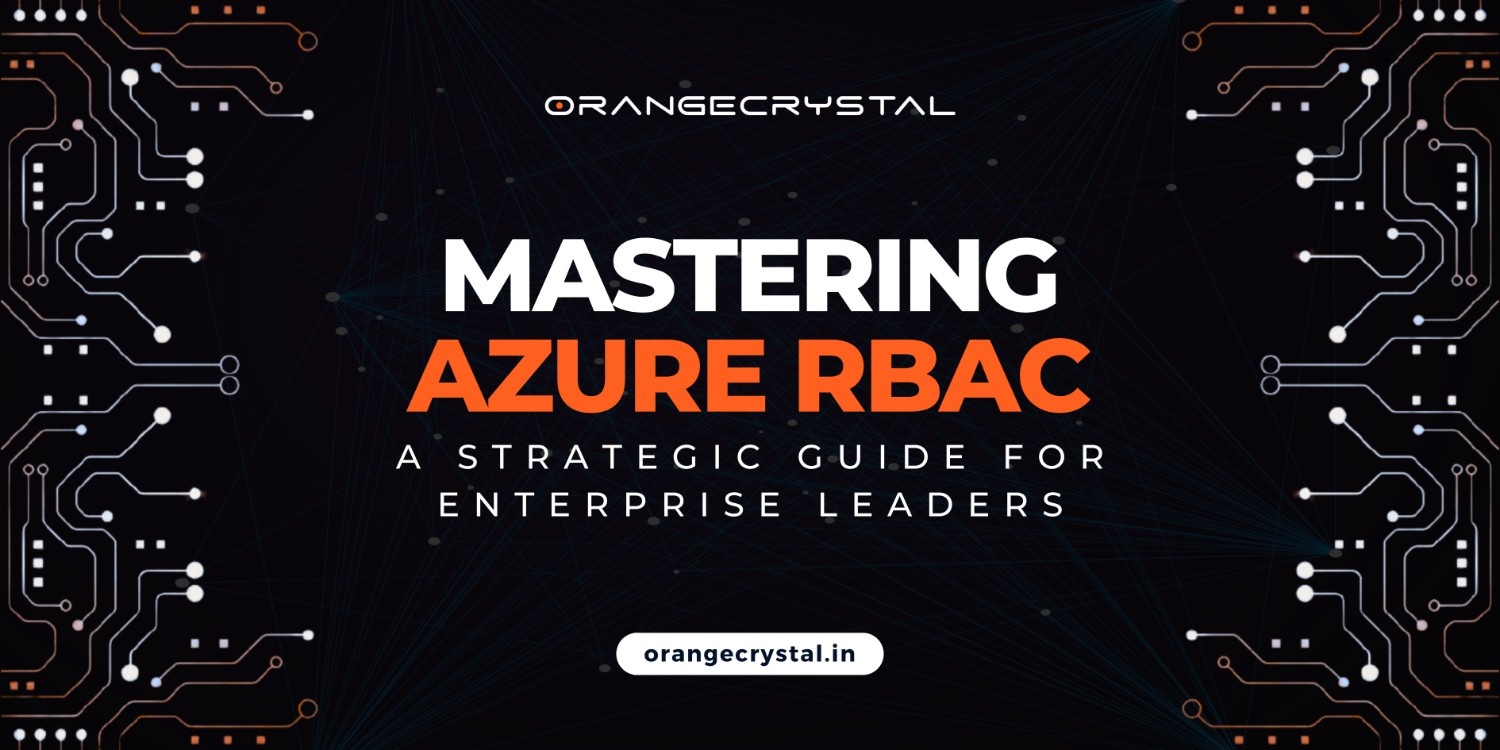How Azure Role-Based Access Control Empowers Enterprise Governance
In today’s digital-first enterprise, where agility, security, and compliance converge, identity and access management (IAM) is no longer just a technical requirement—it’s a business imperative. For enterprise leaders tasked with orchestrating seamless, secure, and scalable operations, mastering IAM in cloud environments like Microsoft Azure is essential.
At the core of Azure’s security model lies Role-Based Access Control (RBAC)—a powerful framework that governs who has access to what resources, under which conditions. But RBAC is not merely a permissions model; it’s a strategic lever for minimizing risk, optimizing resource utilization, and driving operational governance at scale.
This deep dive explores the nuances of Azure RBAC through the lens of enterprise priorities—operational continuity, customer experience, data governance, and digital transformation.
Understanding Azure RBAC: Beyond Permissions
Azure Role-Based Access Control (RBAC) is a fine-grained access management system that allows enterprises to enforce policies based on roles aligned with organizational responsibilities. It enables IT and operational leaders to:
- Enforce least privilege access by assigning users only the permissions they need.
- Segregate duties and mitigate insider risk by distributing roles strategically.
- Ensure compliance and audit-readiness with traceable, role-based entitlements.
Azure RBAC functions by mapping security principals (users, groups, service principals, or managed identities) to roles that define a collection of permissions over Azure resources.
Strategic Relevance for Enterprise Leaders
While RBAC is often implemented by IT teams, its implications ripple through every facet of enterprise operations. Here’s why senior leaders should be invested:
1. Operational Resilience and Business Continuity
Directors of Operations are tasked with ensuring systems remain available, scalable, and secure. RBAC supports this by:
- Preventing unauthorized changes that can lead to service outages or compliance violations.
- Enabling clear demarcation of responsibilities, reducing operational confusion in high-pressure situations.
- Supporting geo-distributed operations with scoped access across subscriptions, regions, and departments.
2. Customer Trust and Data Stewardship
For CX leaders, customer trust is non-negotiable. Misconfigured access permissions can expose sensitive data or degrade service levels. Azure RBAC enhances customer experience by:
- Enforcing strict controls over customer data access, especially across multi-tenant or multi-region setups.
- Ensuring support teams have access only to the systems relevant to their role, thereby avoiding unnecessary data exposure.
- Enhancing transparency with detailed access logs, supporting post-incident analyses and continuous improvement.
3. Vendor Management and Global Sourcing Governance
Directors of Global Sourcing often manage third-party vendors and partners who require temporary or limited access. RBAC empowers sourcing teams to:
- Provision time-bound or scoped access to vendors via just-in-time (JIT) access integration with Azure AD Privileged Identity Management (PIM).
- Maintain clear visibility into third-party activities, ensuring contract and regulatory compliance.
- Align access with vendor segmentation models, reducing lateral movement risks.
Implementing RBAC at Scale: Best Practices
1. Adopt a Hierarchical Access Model
Use management groups, subscriptions, resource groups, and resources to structure your Azure environment. Assign roles at the highest appropriate level to ensure inheritance while minimizing redundancy.
2. Use Built-in Roles Judiciously; Define Custom Roles When Needed
Azure offers over 70 built-in roles such as Reader, Contributor, and Owner. For enterprise-specific scenarios (e.g., “Customer Data Auditor” or “Sourcing Compliance Viewer”), create custom roles tailored to your governance model.
3. Leverage Azure AD PIM for Privileged Access
Integrate RBAC with Azure AD PIM to enforce JIT access, approval workflows, and access reviews, reducing the attack surface and strengthening your compliance posture.
4. Continuously Audit and Review Role Assignments
Access needs evolve. Regularly audit role assignments, monitor for overprivileged accounts, and use Azure Activity Logs and Microsoft Defender for Cloud to detect anomalies.
5. Integrate with Your Enterprise IAM Strategy
Ensure Azure RBAC complements your broader IAM architecture, including integration with Identity Governance tools, Zero Trust frameworks, and SIEM solutions like Microsoft Sentinel.
Real-World Use Cases
Scenario: Customer Support Platform with Tiered Access
A global customer support team requires tiered access to diagnostic tools, logs, and customer environments. Using RBAC:
- Tier 1 agents receive read-only access to resource metrics and logs.
- Tier 2 agents gain limited contributor rights for remediation.
- Escalation teams use JIT access with elevated privileges approved by managers.
Scenario: Vendor Access in Global Sourcing
A cloud migration vendor needs access to specific workloads in Europe. RBAC allows the sourcing director to:
- Assign a custom role scoped to a European resource group.
- Set access duration and approval flow using Azure PIM.
- Monitor activity with Azure Monitor and Sentinel for real-time compliance tracking.
Measuring the ROI of RBAC Maturity
While RBAC implementation is a technical endeavor, its value is measurable across business KPIs:
- Reduced audit findings and compliance overhead.
- Faster time-to-resolution for operational incidents due to clearly scoped responsibilities.
- Lower breach risk and improved cyber insurance terms via stronger access controls.
- Optimized IT operational costs through elimination of redundant or excessive access rights.
Enterprises that fully leverage Azure RBAC report increased agility, improved team collaboration, and stronger data governance—translating into tangible business outcomes.
Final Thoughts: IAM as a Strategic Enabler
In the hybrid, multi-cloud world, Azure RBAC stands as a critical pillar of enterprise security and operational governance. For enterprise leaders, embracing RBAC is not just about controlling access—it’s about enabling secure innovation, protecting customer trust, and ensuring operational excellence.
Ready to Unlock the Full Potential of Azure RBAC?
Whether you’re optimizing a global support operation, managing complex vendor ecosystems, or preparing for your next compliance audit, our experts at OrangeCrystal can help you tailor Azure IAM and RBAC strategies to your unique business needs.
Contact our in-house cloud architects and IAM specialists today for a personalized consultation and discover how Azure RBAC can transform your operational security posture.



Leave a Reply